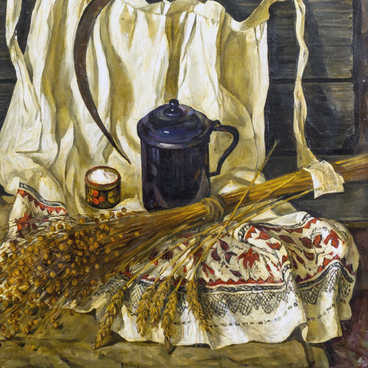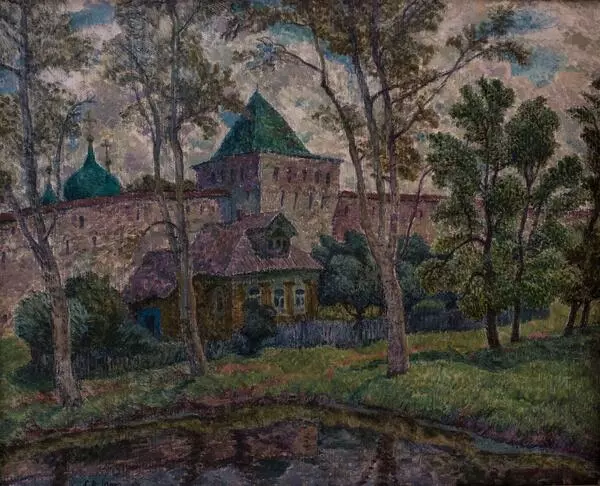Vyacheslav Konstantinovich Stekolshchikov was born in 1938 in Moscow. As a child, he lived in a house opposite the museum of Viktor Mikhaylovich Vasnetsov. Acquaintance with the work of the great artist was a determinative factor in Vyacheslav Stekolshchikov’s life. He wrote,
The End of a Good Summer
The first encounter with fine art in my life took place in Vasnetsov’s house. This encounter decided my fate.
Vyacheslav Stekolshchikov entered the Faculty of Painting of the Surikov Moscow Art Institute, but graduated from the Faculty of Graphic Arts. His graduation work was based on the novella by Sergey Petrovich Antonov “Alyonka” under the guidance of the prominent graphic artist Yuri Petrovich Rayner.
In 1957, Vyacheslav Stekolshchikov won the competition on creating the emblem and badge of the World Festival of Youth and Students, which was held in Moscow. After graduating, he often went on creative trips. He traveled to the Arctic, Chukotka, Kamchatka, and Tyumen.
He even witnessed a war in Africa, in the Republic of Guinea-Bissau, where he was artistically reinterpreting “the process of liberating the African people from the colonial rule of the Portuguese.” On that trip, the artist found himself in a dangerous situation and miraculously survived. The African trip inspired Stekolshchikov to determine what the main theme of his art was and what images he could create that would be consonant with his soul.
Vyacheslav Stekolshchikov is known for his series of graphic works “Moscow in a Soldier’s Overcoat” and paintings “Borisoglebsk Chronicle”. He was awarded a diploma of the Academy of Arts for a series entitled “To Love the Motherland”.
The artist depicted the appearance of ancient Russian cities and their ancient architecture with love and understanding. In each of his works, one can find a rich poetic image. He wrote,I’m not so much appealing to the viewer’s mind as to their heart.
The artist’s landscapes immediately catch the viewer’s eye by their fitting color palettes. Each of his canvases contains dozens of shades, but Stekolshchikov builds up all this coloristic richness and combines various tones in such a balanced way that the colorfulness does not become a cacophony of shades, but rather pleases with its inner harmony.
In the painting “The End of a Good Summer” Stekolshchikov depicted a village church. It is located near Yaroslavl on the road from Rostov to Uglich. The artist conveyed a sense of peacefulness. This is a simple rural landscape which, however, embodies the artist’s love for the Motherland, joy of life, and a subtle sense of beauty.



